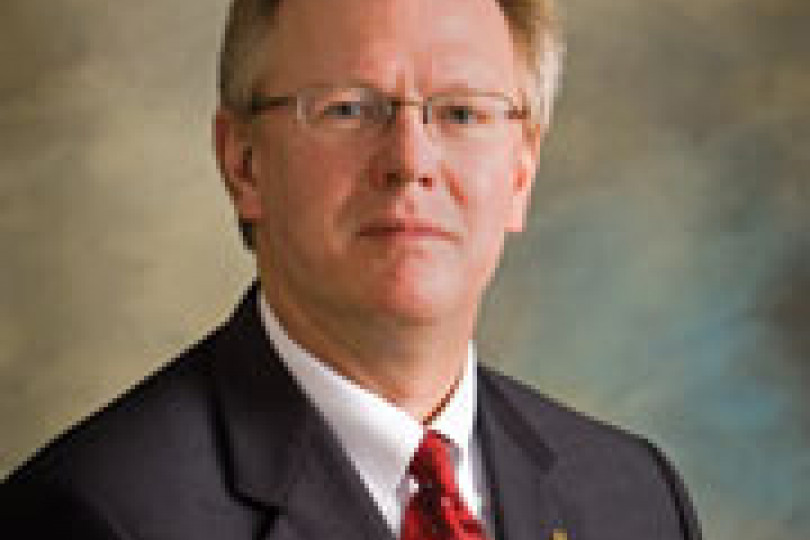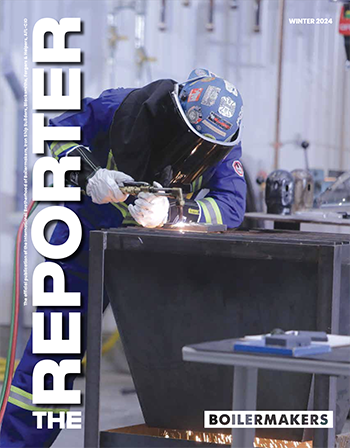Agency’s emission strategy is wrong-headed, damaging
BOILERMAKERS WHOSE livelihoods depend at least in part on the use of coal-generated electric power learned with great alarm and frustration of the EPA’s new rule that will essentially block future plant construction. The agency announced its Proposed Carbon Pollution Standards for New Power Plants September 20 as “its first steps under President Obama’s Climate Action Plan.”
About half of all union Boilermakers in the United States are employed in the construction and maintenance of coal-fired power plants. Other members mine coal for a living. Largely because of restrictive EPA rules, hundreds of power plants have been shut down already, and many that were planned have been cancelled.
Now, the latest EPA rule threatens the very future of coal-fired electric generation in America. It sets carbon dioxide emission limits so low as to make building new plants economically and technologically infeasible.
On many levels, the EPA’s carbon emission strategy is wrong-headed and damaging to America.
Setting a standard that cannot be met
UNDER THE EPA rule for new source coal-fired generation, the carbon dioxide emission limit plummets from 1,768 pounds per megawatt-hour to 1,100. The agency readily admits that the only way to achieve this reduced level is through carbon capture and storage (CCS).
The major flaw in EPA’s thinking is that CCS is an affordable alternative that is commercially available. If it were feasible — economically and technologically — we would see evidence that utilities are beginning to employ it beyond test sites. But they are not.
"The EPA’s hyper-restrictive CO2 regulations do virtually nothing to resolve global warming. They serve only to satisfy a questionable legal ruling about CO2 as a pollutant and the narrow mindset of constituent environmentalists and their political surrogates. And, tragically, these regulations have potentially devastating economic consequences for this important domestic industry and its dependent workforce, reliant businesses and the millions of hard-working households whose energy bills will go nowhere but up."
Whether by misreading the economics and science on CCS or through a premeditated, calculated decision to ensure no new coal-fired plants are constructed, the EPA standards are a formidable barrier to the future use of coal as an energy source.
Rule ignores emission control progress
ONE OF THE more frustrating aspects of EPA’s position is that it seems to ignore the major advances and billions in investment already made to clean up emissions. Today, advanced new plants are capable of reducing up to 98 percent of sulfur dioxide, 90 percent of nitrogen oxide, and 90 percent of mercury.
These are amazing achievements by the industry, and Boilermakers have been at the forefront of installing the enabling equipment and systems. We have also helped build the first ultra supercritical coal-fired plant in the United States and the world’s largest integrated gasification combined cycle facility in the world. These cutting edge technologies reduce the amount of coal required to create the same amount of energy produced by a conventional coal-fired power plant. Less coal means lower carbon emissions per megawatt-hour.
Research into other technologies holds great promise to further restrict carbon dioxide emissions. America should be investing in these technologies with the intent of sharing them throughout the world. Only then can global emission levels be reigned in.
Unfortunately, EPA’s insistence on CCS technology for new coal-fired plants throws cold water on currently available advanced technologies as well as continued research.
We cannot save the climate alone
IT APPEARS THAT the EPA is charging ahead with carbon restriction rules as though the United States can unilaterally solve climate change. This cannot be done. As I have recently written, according to various sources, developing countries far exceed the U.S. in new coal-fired generation projects. While we are essentially at zero now, other countries are steadily expanding their coal energy use. In many cases, there are far fewer emission controls being installed than would be required in the United States.
The conclusions reached by these recently cited sources bear repeating:
“China’s greenhouse gas emissions are twice those of the United States and growing at 8 percent to 10 percent per year. By 2020… China will emit greenhouse gases at four times the rate of the United States, and even if American emissions were to suddenly disappear tomorrow, world emissions would be back at the same level within four years as a result of China’s growth alone.”
Source: Elizabeth Muller, Executive Director, Berkeley Earth (New York Times, April 12, 2013)“Despite… a boom in renewable energy over the last decade, the average unit of energy produced today is basically as dirty as it was 20 years ago.”
Source: Maria van der Hoeven, Executive Director, International Energy Agency“At the end of 2012, approximately 1,200 coal plants were being planned across 59 countries — about three-quarters of them in China and India.”
Source: World Resources Institute
While coal-fired generation continues to grow outside the United States, many in government and industry see hydraulic fracturing, or “fracking,” as a solution to controlling carbon emissions. Yet natural gas obtained from this method is not carbon free. Methane and carbon dioxide are released in the fracking process, and CO2 also is emitted when natural gas is burned.
Natural gas prices have fallen during the current boom, but they are sure to rise again as demand catches up with supply. An overreliance on natural gas will bring utility price spikes as we have seen in the past.
Collateral damage ignored?
UNILATERALLY MARCHING forward with strict emission controls handcuffs the U.S. economy while world competitors go forward. At a time when we can least afford it, EPA emission rules have cost American workers thousands of good jobs and decimated the economic base of numerous small communities. Additional good jobs will never be realized, because new coal generation plants will not be built under the EPA’s excessive rules.
The construction trades as well as nonunion workers involved in building and maintaining coal-fired power plants have already lost many millions of man-hours of work. All of this takes a tremendous toll on our economic recovery. Yet the EPA and the current administration seem to accept this collateral damage without much consideration.
We can and we must do better.
We are wasting precious time
THE EPA AND the Obama administration would do well to give more attention to the industries and workers who provide reliable and affordable electricity to this country and less to environmentalists, some of whom openly admit they have an agenda to end coal use altogether, no matter how clean it becomes.
As a nation, we cannot afford to sacrifice so many good jobs for the sake of making a statement about climate change. We are wasting precious resources and precious time. The Obama Administration should be leading the world to develop affordable CCS technology for all of the world’s coal-fired power generation systems. Without it, we are faced with at least 50 more years of ever-rising world CO2 emissions.
The EPA’s hyper-restrictive CO2 regulations do virtually nothing to resolve global warming. They serve only to satisfy a questionable legal ruling about CO2 as a pollutant and the narrow mindset of constituent environmentalists and their political surrogates. And, tragically, these regulations have potentially devastating economic consequences for this important domestic industry and its dependent workforce, reliant businesses and the millions of hard-working households whose energy bills will go nowhere but up.
Perhaps, as I suspect is the view of most Boilermakers, it would be a more effective fix for global warming if the EPA would devise emission control regulations for the steady stream of political, legislative, and regulatory pollution emanating from Washington, D.C., on this and so many other important issues facing working and out-of-work America.






